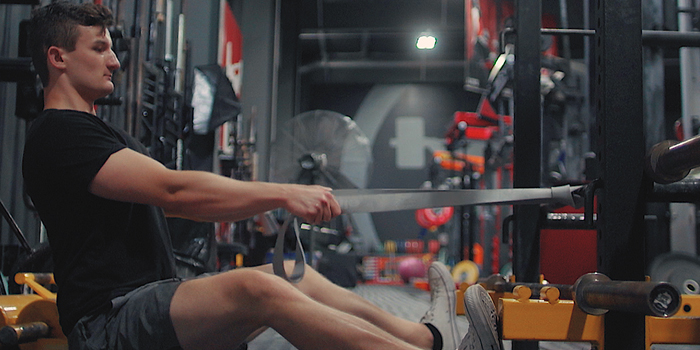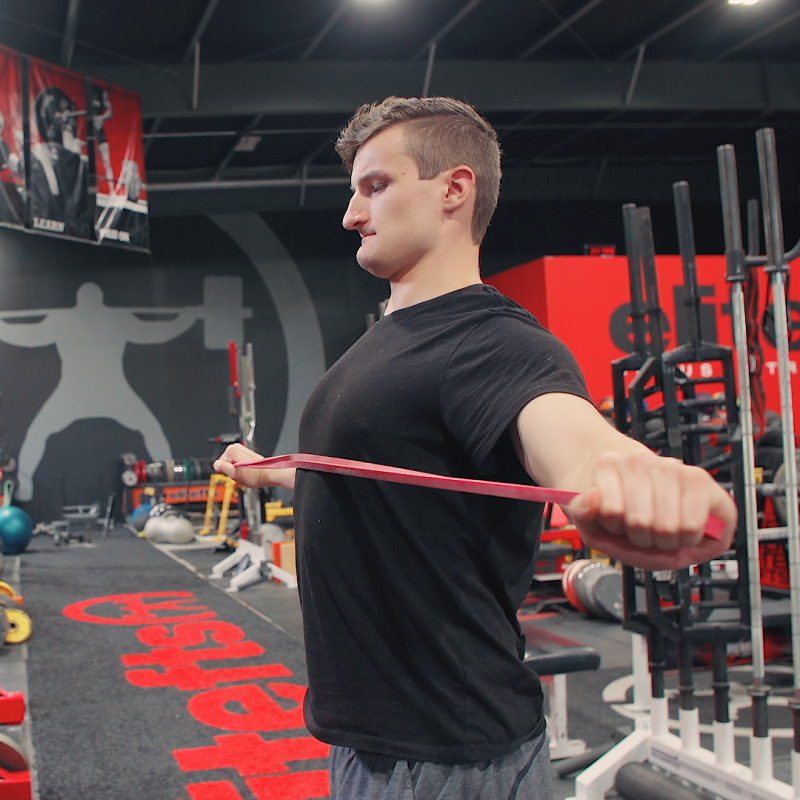
In decades prior, it was common for each subsequent generation to have a longer projected life span than their parents did. For the first time in history, this is no longer true. Not only has the length of life been under examination but also the QUALITY of that span of human life. For performance-driven athletes and individuals, this focus on “healthspan” becomes even more important than “lifespan,” for to be able to do what we love, and to continue to live, learn, and pass on, we must not only be alive but also be thriving. To thrive and to truly optimize our health and our time on this planet, we must first understand what drives health and longevity.
RECENT: The Role of the Gut in Athletic Performance
The primary drivers of aging can be narrowly reduced to inflammation, oxidative stress, and mitochondrial function (more on combatting these later).
Inflammation
The first, inflammation, is a buzzword that was previously thrown around a lot in the strength and conditioning industry but was specific to inflammation. We’ve come to understand over time that inflammation, when broadly defined, is not localized and is the body’s reaction to something harmful or damaging. There is some form of inflammation going on in the body every moment of the day, whether there is an infection at the cellular level, or an injury. When there is too much inflammation, the body begins to experience an additional burden on our organs and glands, often resulting in a strain on our immune system. When researchers look at individuals exceeding 100 years of age, keeping inflammation in check has been one of the most integral factors to their lifespans. We’ve also come to understand that inflammation can influence digestion, intestinal permeability, glycemic regulation, and conditions such as an autoimmune disease.
Oxidative Stress
The second consideration when examining long-term health and human performance is oxidative stress. Inflammation and oxidative stress often work hand in hand as a means of bodily degradation. However, these two culprits occur for divergent reasons. Oxidative stress is the consequence of the production of free radicals and damage that exceeds the body’s ability to fight those radicals with antioxidants. When the body creates energy at the cellular level, the byproduct or waste is known as free radicals. The good news is that diet, lifestyle, and toxicity are the greatest contributors to oxidative stress levels, and they can make a profound difference. We’ll discuss specific strategies below.
Mitochondrial Function
The third element to consider when looking at longevity is mitochondrial function. As you may have learned in your high school biology class, these are small but hard-working components of our cells. They are largely responsible for creating energy in the form of the ATP that we all know and love for driving performance and personal records on our favorite lifts in the gym, or bursts of speed on a track or field. When these workhorses become dysfunctional or create more byproducts than our physiology can manage, they begin to face constraints and slow down total energy production. To live long and healthy, performance-driven lives, we must keep these mitochondria healthy.

The 8 Pillars of Longevity for Athletes
Some of the top ways to manage the three primary considerations for longevity are:
1. Sleep. By supporting a healthy sleep-wake cycle, we combat more inflammation with sleep, and we drive down the creation of inflammatory cytokines. Sleep also improves insulin sensitivity and the markers of reproductive hormones. Both of these elements reduce the risk of chronic disease (insulin – diabetes, and testosterone/estrogen – cardiovascular health). These also happen to be key drivers of muscle growth and tissue repair.
2. Manage your stress. This one should really be number one, as we know that stress can induce and exacerbate disease states, such as heart disease and cancer. Stress in the microcosm of daily life is likely to influence sleep and recovery from intense training. The novelty of stress, predictability of stress, and source of stress seem to be key contributors to how the body manages reactions to precarious situations. Acute bouts of stress can be utilized to manage health, whereas chronic stress results in more widespread negative reactions.
3. More sunlight and nature. From our vitamin D levels to circadian rhythms and lipid profiles, sunlight has the incredible ability to support the immune system, build bones, and prevent depression and chronic disease.
4. Community and joy. One of the most underrated elements of lifespan is social interaction. Having a peer group, healthy friendships, family connections, and even pets can drive key markers of health, ward off depression, and create better life expectancies. In a society where we are more technologically connected than ever, we are facing a lack of interpersonal connection.
5. Hormesis. Also known as incremental, involves intermittent bouts of controlled stress from things like exercise, cold exposure (contrast hydrotherapy or cryotherapy), heat exposure (sauna), light exposure, and most forms of exercise. Fortunately, if you are reading this, chances are that you are already nailing that last one.
6. Consuming more plants (you don’t need to go vegan just yet). Not only are plants rich in antioxidants and micronutrients but also the fiber contained in plants can be beneficial to the microbiome.
7. Fasting. Also known as restricted feeding, fasting has been linked to longer lifespans primarily due to the “self-cleaning” that occurs at a cellular level. Old cells can be repaired, rebuilt, or destroyed. This strategy is also a useful tool for giving digestion a break in athletes who are often pushing large amounts of food to drive muscle gain or weight gain for competition. Alternatives to prolonged fasting include intermittent fasting, a fast-mimicking diet, or a protein-sparing modified fast.
8. Hydration. The fitness industry has nearly as many articles about water as it does any other topic, but a positive hydration status seems to be an ever-elusive task for many athletes. Rather than bore you with the details, I’ll simply emphasize that from your brain to your kidneys, there is no escaping the importance of hydration.
Bonus! While I’d never consider supplements to be essential, we are learning more about peptides and plant medicine with each year that passes. From amino acids found in human gastric juices, to root extracts found in nature, there are countless tools to supplement your attack on inflammation and oxidative stress. Some of my favorites (not in order) include: BPC 157; curcumin; berberine; DHA–rich fish oil; citrus bergamot; and countless adaptogens, such as ashwagandha.
Live. Learn. Pass on.
Although adding a couple of years to your life may not presently seem as consequential as adding a few pounds to the bar, remember that to create a legacy, one must first live. My hope is that by using the tools, research, and knowledge we have that you continue to not only perform optimally but also live optimally for years to come.











1 Comment